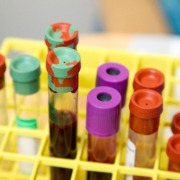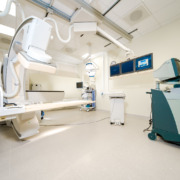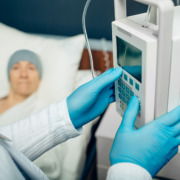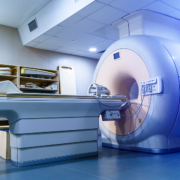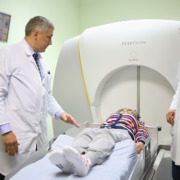Stereotactic Body Radiotherapy ‘Effective’ For Lung Cancer
There are many different kinds of radiotherapy, and the effectiveness of selecting one form over another is becoming increasingly apparent as research highlights the relative value of different approaches for particular conditions.
This extends to comparisons between using various methods of delivering radiotherapy and alternative treatments.
In practice, many cancers are treated using a combination of radiotherapy with other treatments, such as surgery, chemotherapy and targeted drugs, rather than as an alternative. Nonetheless, much research has taken place to help reveal the effectiveness of each approach.
New Study Highlights Value Of Stereotactic Radiosurgery
The latest case may be particularly valuable for anyone who is suffering from lung cancer.
New research has indicated that using stereotactic body radiotherapy for a common form of lung cancer known as non-small cell lung cancer (NSCLC) in its early stages (Stage I) can be as effective at extending survival times for patients as invasive surgery.
Across a range of metrics, the long-term outcomes for patients who underwent stereotactic body radiotherapy and those undergoing surgery were very similar.
This procedure would be best suited to peripheral, small (typically ≤5 cm) stage I NSCLC, medically inoperable patients, or selected operable patients preferring non-surgical care/at higher surgical risk. Central tumours require modified fractionation and stricter dose constraints.
Research carried out via the STARS trial has been presented at the annual meeting of the American Society for Radiation Oncology to highlight these findings.
According to the presentation, the trial, which was carried out over ten years, involved two groups of 80 patients, one of which was treated with stereotactic body radiotherapy, while the other underwent a form of surgery known as a video-assisted thoracoscopic lobectomy.
How The Study Was Conducted
All of the patients were treated at the University of Texas MD Anderson Cancer Centre between 2015 and 2017, having been deemed well enough to undergo either procedure, with the time elapsed between then and 2025 enabling the researchers to accurately assess the comparative survival rates. The median patient follow-up time was 8.3 years.
Senior author of the study, Dr Joe Chang, revealed: “Our study confirms, based on a decade of data, that stereotactic body radiotherapy is a strong alternative to surgery for most patients with operable stage I NSCLC.”
Moreover, there may be additional benefits compared with the surgical option, with Dr Chang adding: ”This highly targeted, non-invasive treatment achieved the same long-term overall survival as lobectomy, while offering many patients an easier recovery and potentially better quality of life.”
He noted that the use of stereotactic body radiotherapy in this fashion is fairly new, as “surgery historically was the only standard option for early-stage NSCLC.” Unfortunately, around half of patients treated surgically suffer significant side effects, he added.
This study was, Dr Chang highlighted, the first of its kind carried out to compare outcomes over a ten-year period, as well as involving more patients than previous studies. This provides new evidence of the effectiveness of this form of radiotherapy for early-stage NSCLC.
In the case of the patients treated at the Anderson Cancer Centre, the radiation was delivered in very precise doses in five sessions or fewer.
Comparing Side Effects
This fact has significant implications for side effects. Radiotherapy is never free from side-effects and patients can experience symptoms such as skin soreness and nausea.
However, this can be placed in perspective when compared with the outcomes for those undergoing surgery for NSCLC. Those suffering side effects from surgery will find that they’re affected differently to those who have undergone radiotherapy, especially stereotactic radiotherapy.
This is partly because the side effects of radiation exposure wear off over time, which patients will notice from positive signs such as their appetite returning and their hair growing back.
Secondly, because stereotactic body radiotherapy is so precise, fewer sessions will be needed and there is less exposure to radiation for healthy tissue, which reduces the side effects.
The Future Of Lung Cancer Treatment
Given the similarity of long-term outcomes but the comparative advantage of stereotactic body radiotherapy in tackling NSCLC, it may be that it becomes the preferred treatment for treating this form of lung cancer going forward.
Overall, lung cancer may become progressively less common as smoking rates decline around the globe, although there are (albeit rare) forms of the disease that can be contracted by non-smokers, and it will remain a common cancer for many years to come, even as many countries seek to phase out smoking.
Highlighting this fact, the STARS survey presentation noted there will be an estimated 226,650 new cases diagnosed in the US alone in 2025. 85 per cent of them will be NSCLC.
This means research like the STARS survey, which highlights the value of stereotactic body radiotherapy, will still be very valuable. If you have been diagnosed with NSCLC, our radiotherapy centre may be able to provide advanced treatment from which you can benefit greatly.
Learn more about our advanced radiotherapy treatments for lung cancer on the Amethyst Group website.



